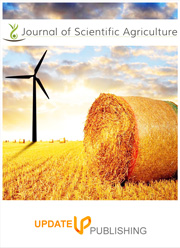Production and adoption constraints of coffee improved varieties in Jimma zone; Southwest Ethiopia
DOI:
https://doi.org/10.25081/jsa.2019.v3.5450Keywords:
Constraint, Cooperative, Kendall, Market Information, UnionsAbstract
The study was aimed to identify major coffee production problems that affected coffee farmers’ production and productivity. The study was conducted in four districts of Jimma zone namely Gera, Manna, Limu Kosa and Gomma. Multistage sampling technique was employed to select the population for the study which involved both purposive and random sampling techniques. Data was collected through structured questionnaire administered to sampled farmers from 285 coffee producing households. Both descriptive and inferential statistics were used to analyze the gathered and cleaned data. Kendall’s coefficient of concordance was used to rank the most important coffee production constraints. The study has identified three top constraints on coffee production. Low and fluctuating coffee price, coffee market information problem and lack of coffee seed and seedling varieties preferred were the major problems explored. Strengthening cooperatives and unions, sustainable supply of improved coffee seeds and seedlings, and sustainable coffee seed system are suggested to tackle coffee production problems.
Downloads
References
[2] ICO /International Coffee Organization/ Trade Statistics Tables. http://www.ico.org/trade_statistics.asp (accessed November 28, 2016).
[3] Wiersum KF. Indigenous exploitation and management of tropical forest resources: an evolutionary continuum in forest-people interactions. Agriculture, Ecosystems & Environment. 1997;63(1):1-6.
[4] DFSC and IPGRI. Forest genetic resources conservation and management, Vol.1: Overview, concepts and some systematic approaches. International Plant Genetic Resources Institute; Rome, Italy, 2001.
[5] Olmos LC, Duque EA, Rodriguez E. State of the art of coffee drying technologies in Colombia and their global development. Revista ESPACIOS. 2017;38(29).
[6] Adugna G, Bellachew B, Shimber T, Taye E. Kufa T. Coffee diversity and knowledge. Ethiopian Institute of Agricultural Research. Addis Ababa, Ethiopia, 2008.
[7] USAID. Ethiopian coffee industry value chain analysis. Profiling the actors, their interactions, costs, constraints and opportunities; 18 June 2010.
[8] Pokorna I, Smutka L. What is the structure of the coffee market: Can the real poor benefit from the coffee trade?. AGRIS on-line Papers in Economics and Informatics. 2010;2.
[9] Bizualem A, Degye G, Zekarias S. Analysis of marketed surplus of coffee by smallholder farmers in Jimma zone, Ethiopia; Journal of Biology, Agriculture and Healthcare. 2015;5(5):242-251.
[10] Dessalegn G, Solomon K. Evaluating coffee market structure and conduct in Bench Maji Zone, South West Ethiopia; Journal of Agricultural Economics, Extension and Rural Development: 2014;2(5):56-163.
[11] ECTDMA /Ethiopian coffee and tea development and marketing authority. Coffee productivity and quality improvement package training manual (Amharic); Addis Ababa, Ethiopia, 2016.
[12] JANRD/Jimma Zone Agricultural and Natural Resource Development. Profile and features of districts; unpublished report; Jimma, Ethiopia, 2016
[13] Pinamang PA, Eyram NA, Nimo-Wiredu A, Adogoba D, Nsiah-Frimpong B, Haleegoah J, Adu-Appiah A, Owusu-Asante B, Adofo K, Baafi E. Root and tuber crops technologies adoption and impact study in Ghana: the case of improved sweet potato technologies; Final Report to the West Africa Agricultural Productivity Program, Ghana, 2017.
[14] Adesina AA, Zinnah MM. Technology characteristics, farmers' perceptions and adoption decisions: A Tobit model application in Sierra Leone. Agricultural Economics. 1993;9(4):297-311.



 .
.